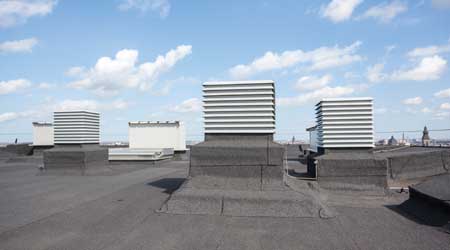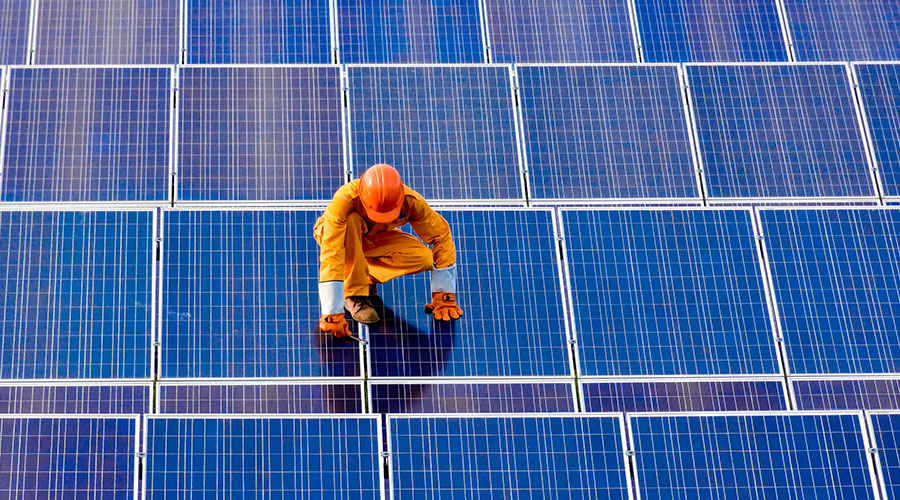 Replacing rooftop equipment, such as HVAC units, must be done carefully under close supervision to prevent damaging the newly installed roof.
Replacing rooftop equipment, such as HVAC units, must be done carefully under close supervision to prevent damaging the newly installed roof.Post-Installation Maintenance for Roof Replacement Success
Close attention to roof specification, installation and maintenance can ensure long performance life for a valuable facility component
Immediately after the installation of the new roof system, workers must perform an inspection to discover and correct installation defects. Waiting to perform this step will make it difficult to establish when the defects occurred. Setting up a maintenance plan is also an essential step because maintenance is required to keep the warranty in effect. The warranty might specify that the roof installer must be the one to do the post-installation maintenance to keep the warranty in effect.
A thorough, immediate inspection right after the installation is crucial for preventing expensive problems from developing. Workers need to inspect all penetrations and ensure a perfect seal exists. They also need to check all seams to look for and fix separations where the seal is not complete at the overlap between sections of the roofing material.
Hard-to-detect defects such as poorly sealed scupper and downspout penetrations can leak under the new roof. Small leaks in these areas can go undetected for months or even years until storm conditions cause enough water to penetrate and show up inside below the leak. Often in these cases, the leak is in one place and the water’s interior entry point is far from that location. The route it takes depends on how the building roof support slopes and where the water flow has the least resistance.
One intermittent problem that can cause sudden leaks involves downspouts that become blocked with leaves and other debris. The backed up water can get into areas that ordinarily are dry. If leakage occurs after a rain, it is an indication that there is a bad seal at the scuppers. Effective roof maintenance can ensure that the downspouts are clear and that the flow of water is not blocked.
Another problem associated with downspouts involves low roofs that are separate from the main roof. Experience shows they can be overlooked, and when this happens, water backup from blocked drains on the low roof can enter through flashings, seams or penetrations and seeps into the gap above the ceiling, causing extensive damage to the ceiling and light fixtures.
Interior damage is not covered by a warranty, which usually covers the roofing materials only. All damage to the interior is at the expense of the building owner. Also, leaks have occurred due to snow drifts on roofs, so managers also must be sure workers remove snow and ice from roofs as needed.
Replacing rooftop equipment, such as HVAC units, must be done carefully under close supervision. Setting down a unit on its corner can puncture the roofing material, and the damage can go unnoticed. Leaks of this kind can be nearly impossible to find later.
Related Topics:















